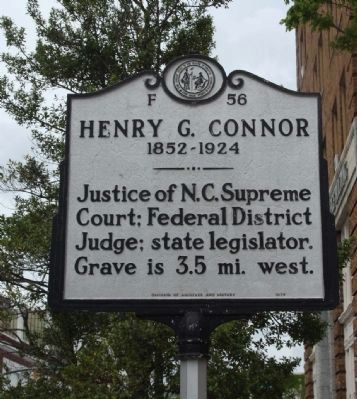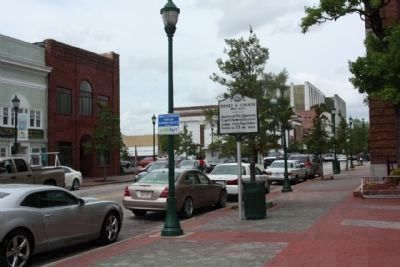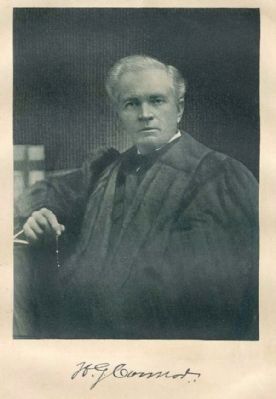Wilson in Wilson County, North Carolina — The American South (South Atlantic)
Henry G. Connor
1852-1924
Erected 1979 by Division of Archives and History. (Marker Number F-56.)
Topics and series. This historical marker is listed in this topic list: Government & Politics. In addition, it is included in the North Carolina Division of Archives and History series list.
Location. 35° 43.524′ N, 77° 54.633′ W. Marker is in Wilson, North Carolina, in Wilson County. Marker is on Nash Street (State Highway 58) north of Goldsboro Street East, on the right when traveling north. Touch for map. Marker is at or near this postal address: 115 Nash St, Wilson NC 27893, United States of America. Touch for directions.
Other nearby markers. At least 8 other markers are within walking distance of this marker. Combat Wounded Veterans (a few steps from this marker); Wilson County Civil War Memorial (within shouting distance of this marker); Branch Banking & Trust Company Building (within shouting distance of this marker); Hackney Wagon Company (within shouting distance of this marker); The Wilson Times (about 300 feet away, measured in a direct line); Wilson Theatre (about 400 feet away); First ABC Store (about 700 feet away); R.D.W. Connor (approx. 0.2 miles away). Touch for a list and map of all markers in Wilson.
Regarding Henry G. Connor. Henry G. Connor, judge and legislator, was born in Wilmington in 1852 to David and Mary Connor. At age three, Connor moved with his family to Wilson where his father died when Connor was fifteen, forcing him to leave school and help support his mother and younger siblings. He became a clerk in a Tarboro store but returned to Wilson to study law with George W. Whitfield. Connor received his license in 1871 and in 1877 established a partnership with Frederick Woodard. A conservative Democrat, Connor was elected to the North Carolina Senate in 1884 and promptly was appointed chair of the Judiciary Committee, an honor rarely conferred on freshman senators. While a senator, he sponsored the Connor Act, requiring deed registration to stabilize land ownership practices. In 1886 he was elected judge for an eight-year term but resigned in 1893 to practice law in Wilson.
Connor’s strong allegiance to the Democratic party led him to work closely with his friend Charles B. Aycock in the white supremacy campaign of 1898 to restore the party’s dominance in North Carolina. He was elected to the North Carolina House of Representatives and was chosen speaker. In order to follow through with the promises of the 1898 campaign, he helped orchestrate the passage of a constitutional amendment that disenfranchised most black voters. According to Carolyn A. Wallace, “Connor’s views of suffrage were those of his race and generation, but he was anxious that any restrictions be established openly and constitutionally, and one of his primary motivations was to secure honest elections.” Connor was re-elected in 1900 and in 1902 was elected to the North Carolina Supreme Court, serving for six years before he was nominated by President William Howard Taft to serve as a federal district court judge, a position he held for the remainder of his life. Always interested in sharing knowledge, Connor wrote several articles and lectured at the University of North Carolina.
Connor was viewed as an honest, hard working man who was devoted to his wife, Katherine Whitfield, daughter of his law tutor. One of his twelve children, Robert Digges Wimberly Connor, grew up to become one of North Carolina’s foremost historians and archivists. Groves and Katherine both died in 1924 and were buried in Wilson’s Maplewood Cemetery. (North Carolina Office of Archives & History — Department of Cultural Resources)
Credits. This page was last revised on May 10, 2023. It was originally submitted on June 17, 2013, by Mike Stroud of Bluffton, South Carolina. This page has been viewed 481 times since then and 15 times this year. Last updated on May 7, 2023, by Michael Buckner of Durham, North Carolina. Photos: 1, 2, 3. submitted on June 17, 2013, by Mike Stroud of Bluffton, South Carolina. • Bernard Fisher was the editor who published this page.


